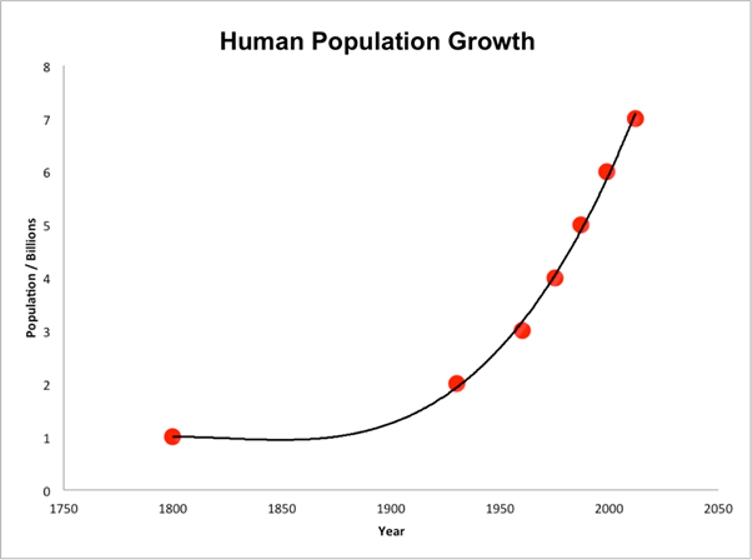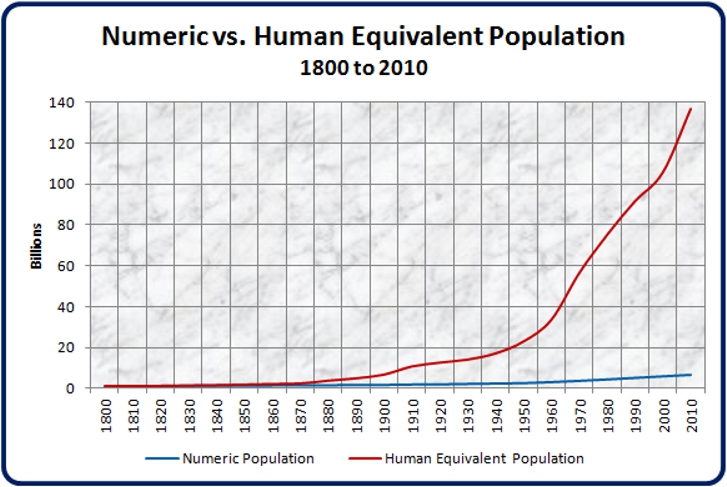Your Footprint on Earth is Larger Than You Think
There is a widely held concept that any measure of the human impact on Earth should include all the resources people consume and all the waste they generate. The objective is to understand the supply/demand balance. At present it is generally considered that we are in deficit. That is, the human population consumes more resources than the Earth is able to regenerate in any given time period.
The Human Footprint (aka Ecological Footprint, Thermodynamic Footprint, Demotechnic Index) is calculated by adding all the energy consumed by an average citizen of a country, and the world, and comparing it with the energy consumed by a person’s energy consumption for food alone.
The easiest way to envisage this is to start back in time. Hunter-gatherers, in effect, only consumed the energy from the food they ate. This is defined as a Footprint of 1.0. As humans started farming and using animal labour the Footprint increased marginally, perhaps to a Footprint of 2.0.
The Nineteenth Century saw the dawn of the industrial age. Wood was increasingly used for industrial purposes. England was almost completely stripped of forest. Then coal came on the scene. It’s use in transportation, steelmaking and energy generation changed the world.
By the start of the Twentieth Century human energy consumption exploded, and so did the population, shown in the chart below. Today there are estimated to be 7.3 billion people on Earth. But that is nothing compared with the growth of the Footprint.
The chart below shows how the Footprint (here defined as the Human Equivalent Population) has increased astronomically over the past few decades. Vastly outpacing the growth in actual population increase. But then, it is only increased energy expenditure that has allowed the extreme population increase.
Chart Courtesy Paul Chefurka
The average US citizen has the largest footprint. But we in Australia are comparable, followed by Europe, Canada and Russia. There are not sufficient resources on Earth to allow all other nations to reach those countries’ heights of consumption.
We are already seeing signs of pressure on the Earth. In my view, the widespread decline in living standards is a harbinger. As is worldwide economic failure. And then there are water shortages, deforestation, declining fish populations – the list is long.
Jeff Simmons is president of Elanco, a division of Ely Lily responsible for growth promoting animal additives. He is messianic in the face of huge opposition from activists, scientists and regulators. But his argument is simple. If we don’t produce food more efficiently, we will not be able to feed everyone. So – if a Chinese couple now can have two children, will they be able to afford to feed them both in the future?
Conclusion
It is clear that, whatever your view, the trend in these charts is real and is unsustainable. But humans are not wired to respond to distant threat. This is a bleak prospect.


